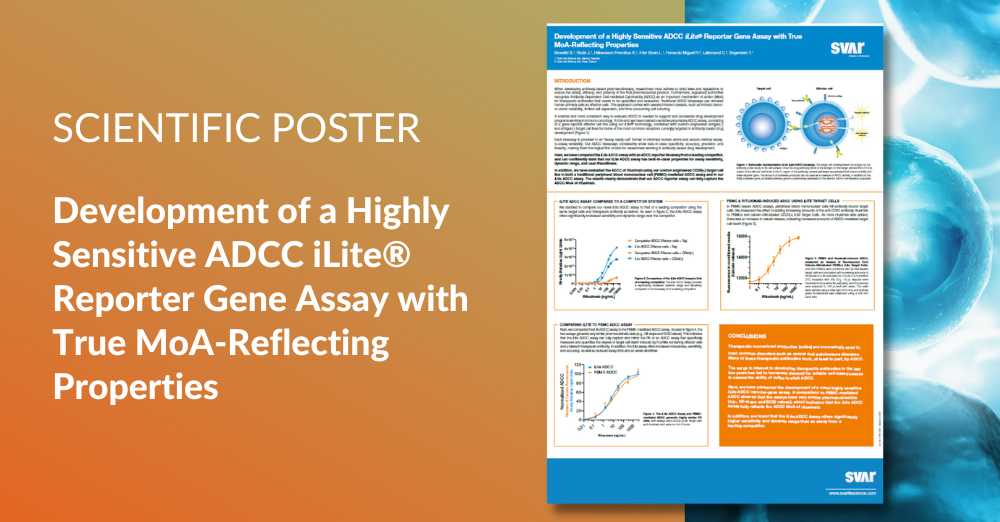- Other Products
- CCP
Regulatory authorities recognize Antibody-Dependent Cell-mediated Cytotoxicity (ADCC) as an important mechanism of action (MoA) for therapeutic antibodies that needs to be quantified and evaluated.
Here, we present a method to evaluate ADCC that overcomes the inherent caveats of using human primary cells as effector cells.
iLite® assay-ready-cell format minimizes human errors and ensures minimal assay-to-assay variability. Our ADCC bioassays consistently show best-in-class specificity, accuracy, precision, and linearity.


Regulatory authorities recognize Antibody-Dependent Cell-mediated Cytotoxicity (ADCC) as an important mechanism of action (MoA) for therapeutic antibodies that needs to be quantified and evaluated.
Here, we present a method to evaluate ADCC that overcomes the inherent caveats of using human primary cells as effector cells.
iLite® assay-ready-cell format minimizes human errors and ensures minimal assay-to-assay variability. Our ADCC bioassays consistently show best-in-class specificity, accuracy, precision, and linearity.
The surge in developing therapeutic antibodies in the last few years has led to increased demand for assays to assess the ability of mAbs to elicit ADCC and ADCP. Traditional ADCC bioassays use donated
human primary cells as effector cells.
This approach has several inherent caveats, such as intrinsic donor-to-donor variability, limited cell expansion, and time-consuming cell culturing.
Here, we present the development of a cell-based iLite ADCC system that can be used to quantify ADCC activity reliably.
We have compared the iLite ADCC assay with an ADCC reporter bioassay from a leading competitor, and the data showed that the iLite ADCC assay has best-in-class properties for assay sensitivity, dynamic range, and user-friendliness.